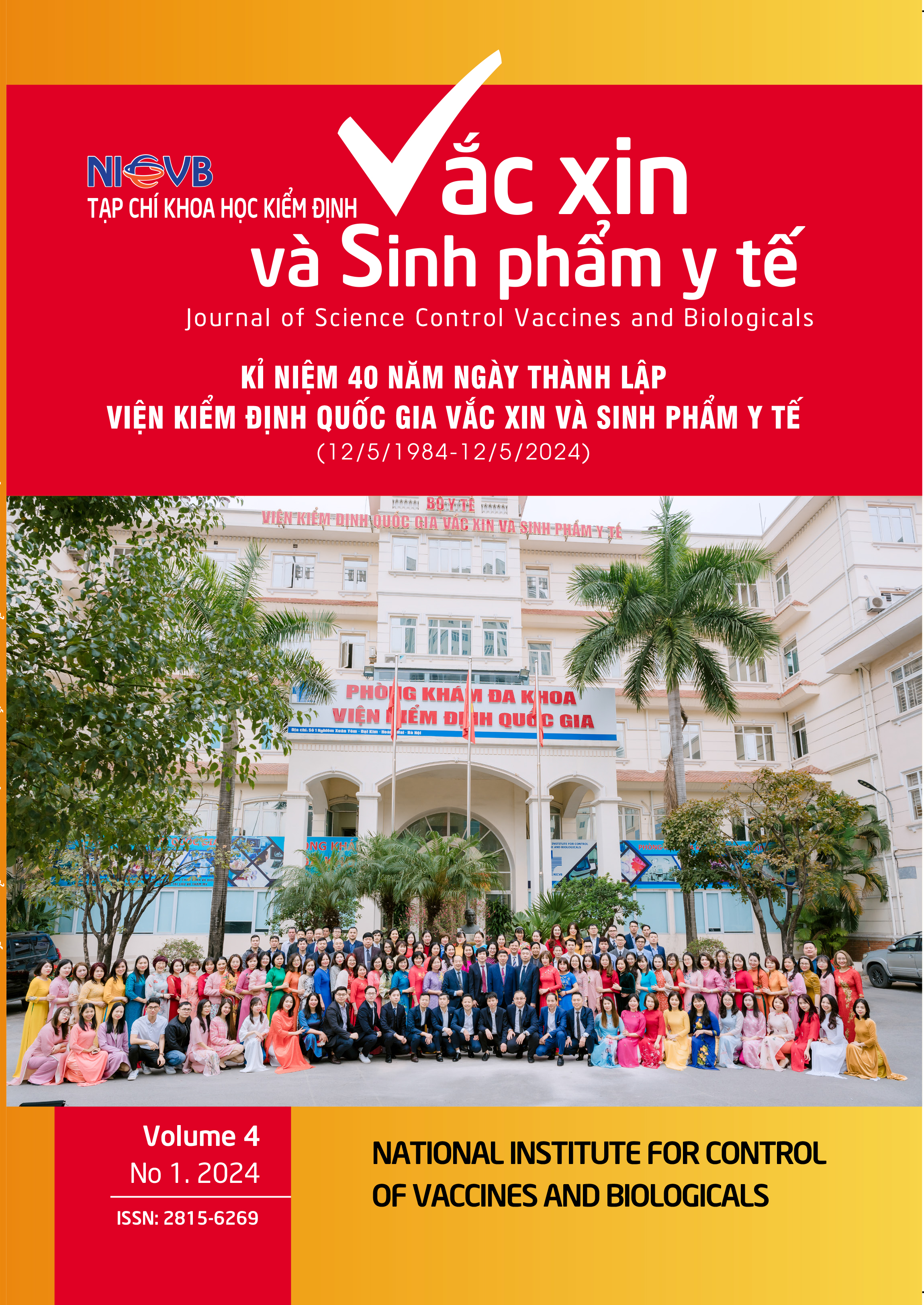A STUDY ON ANTIBACTERIAL EFFECTS, POLYPHENOL CONTENTS AND ANTIOXIDANT ACTIVITIES OF EXTRACTS FROM PLUCHEA INDICA
DOI:
https://doi.org/10.56086/jcvb.v4i1.143Keywords:
Pluchea Indica, extract, antibacterial effects, polyphenol, antioxidant activityAbstract
Our study investigated antibacterial effects of extracts from Pluchea Indica on gram positive and negative bacteria, including Bacillus subtilis (B. subtilis) ATCC 6633, Staphylococcus aureus (S. aureus) ATCC 25923, Escherichia coli ATCC 25922, Pseudomonas aeruginosa ATCC 9027 and Salmonella typhymurium ATCC 13311. In addition, we also measured polyphenol contents and antioxidant activities, applying Folin Ciocalteu and 1,1-diphenyl-2-picrylhydrazyl (DPPH) reagents. Extracts from 6 solvents, including hot water, ethanol, methanol, ethyl acetate, acetone and hexane were used. Experiments were performed in Laboratory of Pharmacology research and Drug development, Center of Research excellence and Innovation, Vietnam National University of Agriculture, from October 2023 to February, 2024. The results showed that Pluchea Indica exerted inhibition on gram positive bacteria, including B. subtilis and S. aureus, and also contained polyphenol and antiosidant activities at significant levels. It confirms the potentials of applying this plant as a natural therapy for bacteria infections. In 6 investigated solvents, methanol showed the best extracting efficacies, in all of 3 parameters, inclusing antibacterial properties, polyphenol contents and antioxidant activities. These results suggest that this solvent should be further studied to explore the potentials of Pluchea Indica and make use of this material in practice.
References
Đỗ Tất Lợi (2014), Những cây thuốc và vị thuốc Việt Nam, Nhà xuất bản Hồng Đức, Hà Nội.
Qiu, Y. Q., Qi, S. H., Zhang, S., Tian, X. P., Xiao, Z. H., Li, M. Y.,& Li, Q. X. (2008). Thiophene derivatives from the aerial part of Pluchea indica. Heterocycles, 75, 1757-1764. https://doi.org/10.3987/COM-08-11345 on May 13, 2022
Buapool, D., Mongkol, N., Chantimal, J., Roytrakul, S., Srisook, E., & Srisook, K. (2013). Molecular mechanism of anti-inflammatory activity of Pluchea indicaleaves in macrophages RAW 264.7 and its action in animal models ofinflammation. Journal of Ethnopharmacology, 146(2), 495–504. https://doi.org/10.1016 / j.jep.2013.01.01 on May 13,2022
Hudzicki & Jan (2009). Kirby-Bauer Disk Diffusion Susceptibility Test Protocol (2020). Retrieved from https://asm.org/getattachment/2594ce26-bd44-47f6-8287-0657aa9185ad/Kirby-Baure-Disk-Diffusion-Susceptibility-Test-Protocol-pdf.pdf on March 22.
Nguyễn Thanh Hà. Phương pháp kỹ thuật khoanh giấy kháng sinh khuếch tán. Kỹ thuật xét nghiệm vi sinh vật Y học. Nhà xuất bản Y học, Hà nội, 1991:329-338.
Bùi Thị Tho & Nguyễn Thị Thanh Hà (2009). Giáo trình Dược liệu Thú y. Nhà xuất bản Nông nghiệp, Hà Nội
Suda, I., T. Oki, Y. Nishiba, M. Masuda, M. Kobayashi, S. Nagai, R. Hiyane & T. Miyashige (2005). “Poluphenol Contents and Radical-Scavenging Activity of Extracts from Fruits and Vegetables in Cultivated in Okinawa, Japan.” Journal of The Japanese Society for Food Science and Technology-nippon Shokuhin Kagaku Kogaku Kaishi - J JPN SOC FOOD SCI TECHNOL 52: 462-471.
Masuda, T.; Oyama, Y.; Inaba, Y.; Toi, Y.; Arata, T.; Takeda, Y.; Nakamoto, K.; Kuninaga, H.; Nishizato, S.; Nonaka, A. Antioxidant related activities of ethanol extracts from edible and medicinal plants cultivated in Okinawa, Japan. Nippon Shokuhin Kagaku Kogaku Kaishi 2002, 49, 652–661.
Sirikhwan, T. (2021). Phytochemical screening, antioxidant and antimicrobial assessment of Pluchea indica (L.) Less extract as an active ingredient in natural lotion bar. Int. J. Curr. Pharm. Res,13(2), 51-57. https://doi.org/10.22159/ijcpr.2021v13i2.41555 on May 13, 2022







